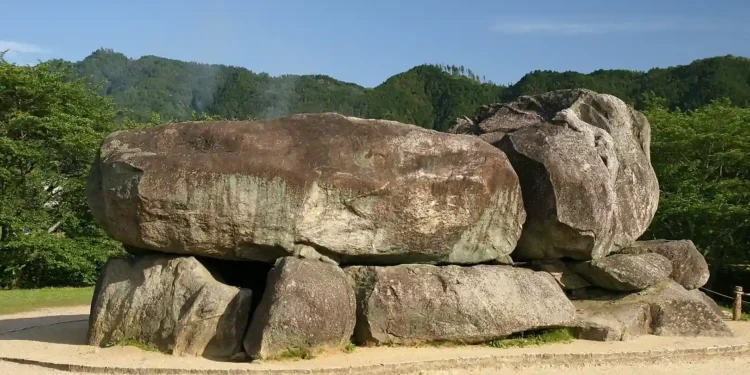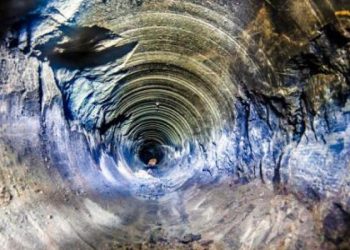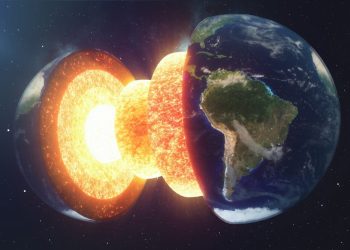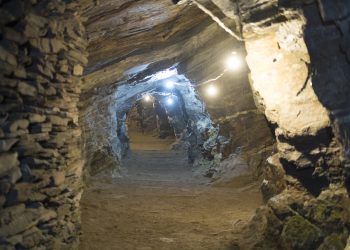Hidden in the quiet village of Asuka, Japan, a monument from a forgotten age raises questions that have yet to be answered. The Ishibutai Kofun is no ordinary tomb. Built over 1,400 years ago, it is a structure so massive, and so carefully engineered, that even today’s best minds struggle to explain how it was created without cranes, pulleys, or machines.
Visitors who stand beneath its towering stones often ask the same question: how did ancient builders, with limited technology, move and position slabs weighing up to 77 tons? And why did they go to such extraordinary lengths?
The answers remain elusive, making Ishibutai Kofun one of Japan’s greatest archaeological mysteries.
A hidden chamber beneath a vanished mound
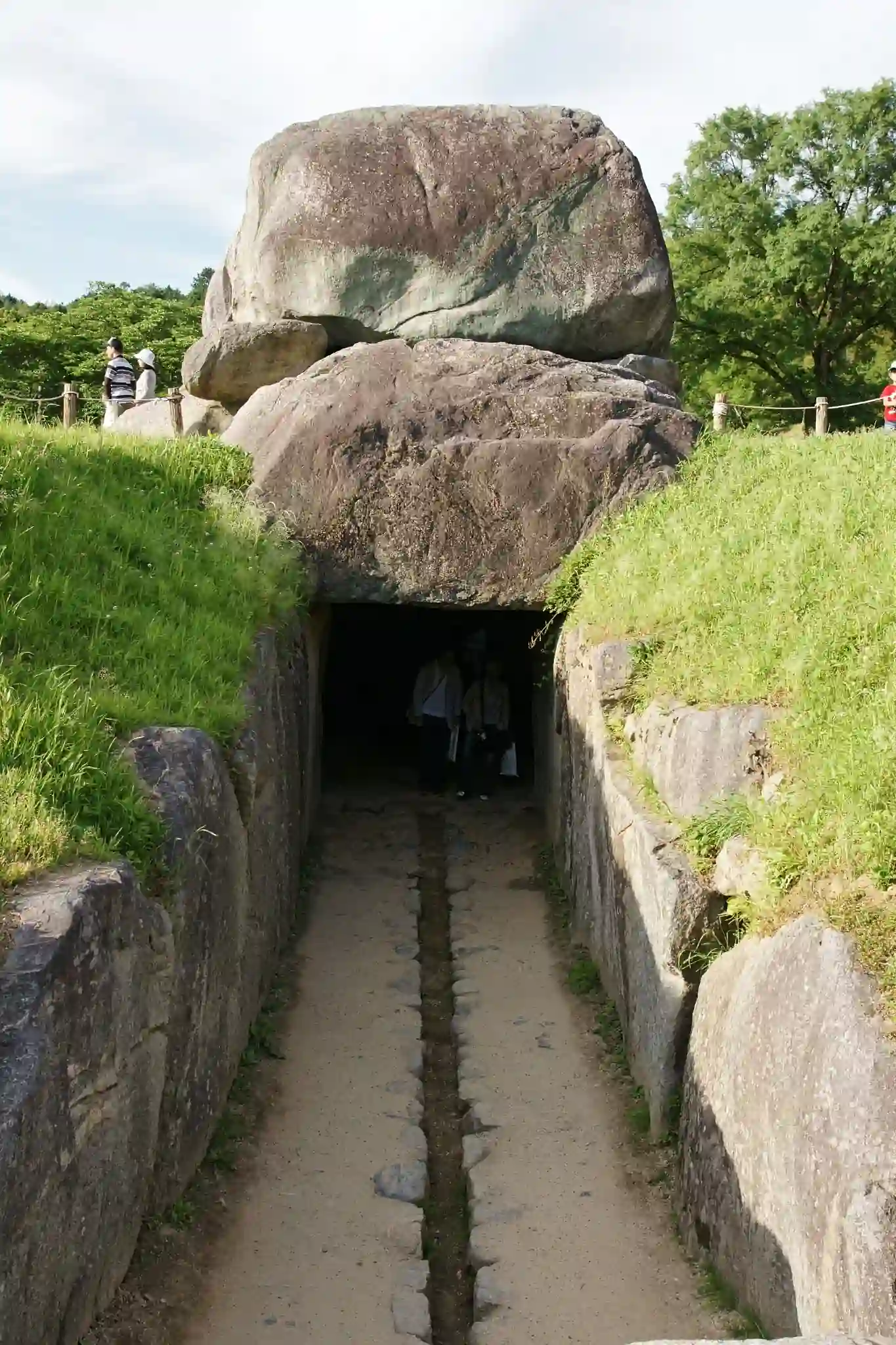
Ishibutai Kofun lies in Nara Prefecture, a region rich in early Japanese history. When it was built around 600 CE, during the late Kofun period, it was not the exposed stone structure visible today. Originally, it was covered by an earthen mound that formed a smooth, rounded hill, blending with the surrounding landscape.
Time and erosion stripped away the earth, revealing the stone chamber underneath. What remains is an enormous structure assembled from more than 30 giant stones, fitted together with remarkable precision. The largest stone—a ceiling slab—measures about 11 meters long, 8 meters wide, and weighs approximately 77 tons.
The overall mass of the tomb is staggering, and yet the builders managed to place each block with such care that the structure remains stable more than a millennium later.
Engineering that defies simple explanation
How did workers transport stones heavier than a modern-day tank without industrial tools? This question continues to baffle historians and engineers.
Several theories have been proposed:
-
Log rollers and manpower: Some believe that workers used large numbers of wooden logs to roll the stones across the land. Teams of hundreds might have coordinated to move each slab inch by inch.
-
Earthen ramps: Another theory suggests that builders constructed long, gradual slopes of packed earth, dragging stones up to the desired height before positioning them.
-
Water transport: Although less widely accepted, a few researchers propose that stones could have been floated on rafts along nearby rivers, and then dragged overland to the site.
Despite these ideas, no definitive evidence confirms any method. No ancient tools, construction blueprints, or detailed records from the time have been found.
What is clear is that the builders understood balance, weight distribution, and structural support at a level that still impresses today.
Who was buried inside Ishibutai Kofun?
Historians generally agree that the tomb was built for Soga no Umako, a powerful noble who played a decisive role in Japan’s early political and religious development. As a leader of the influential Soga clan, he championed the introduction of Buddhism to Japan and shaped alliances that would alter the nation’s future.
However, the connection between Soga no Umako and Ishibutai Kofun remains based largely on historical inference rather than direct archaeological proof. Ancient texts, such as the Nihon Shoki, mention Soga’s death and burial, but they do not describe the tomb’s location with precision.
No inscriptions, grave goods, or human remains have been definitively linked to the site. Some scholars argue that the tomb’s size and grandeur suggest it was built for someone of Soga’s stature, but without physical evidence, the identity of the occupant remains open to question.
A possible link to the movements of the sun
Beyond its physical construction, Ishibutai Kofun may carry symbolic meanings that researchers have begun to explore. Some scholars have proposed that the tomb’s entrance and internal layout may align with solar events, such as the sunrise or sunset during solstices.
If intentional, such alignments might suggest that the tomb was conceived not only as a resting place for the dead but as a ceremonial link between the earthly and celestial realms. The path of the sun could have symbolized the soul’s journey from this world into the next.
Although the solar alignment theory remains debated, it adds an intriguing dimension to Ishibutai’s mystery, suggesting that its builders may have combined technical mastery with astronomical knowledge.
Massive stones around the world
Ishibutai Kofun is not unique in its use of giant stones. Across continents, from Göbekli Tepe in Turkey to Stonehenge in England and Baalbek in Lebanon, ancient societies consistently chose megalithic construction methods despite the enormous difficulties involved.
Why did builders worldwide select heavy stones over easier materials like wood or brick? Some experts believe that durability was a factor; stone monuments endure far longer than other structures. Others suggest that the act of moving and raising massive stones carried religious or cultural significance, serving as a demonstration of strength, unity, and connection to the divine.
In the case of Ishibutai Kofun, the choice of massive stones may have been intended to create a monument worthy of a great leader, ensuring his memory would survive through the ages.
The enduring mystery of Ishibutai Kofun
More than 1,400 years after its construction, Ishibutai Kofun continues to raise questions that modern science struggles to answer. No written plans survive. No detailed accounts explain how the stones were quarried, transported, or fitted. Even today, standing under the great ceiling slab, it is easy to feel the weight not just of the stone itself, but of the mystery it represents.
Asuka’s ancient engineers left behind a structure that resists easy understanding. Every stone, every careful placement speaks to a depth of knowledge and determination that we are only beginning to appreciate.
In a world driven by technology and speed, Ishibutai invites a different kind of reflection—on patience, on craftsmanship, and on the silent brilliance of those who came before us.
Maybe some mysteries are not meant to be fully solved.



